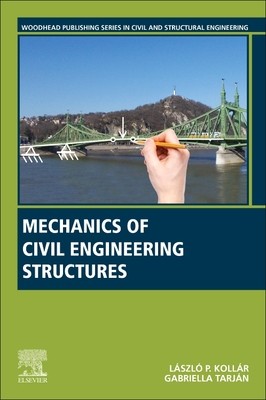
- We will send in 10–14 business days.
- Author: Laszlo P Kollar
- Publisher: Woodhead Publishing
- ISBN-10: 0128203218
- ISBN-13: 9780128203217
- Format: 15.2 x 22.9 x 3.1 cm, softcover
- Language: English
- SAVE -10% with code: EXTRA
Reviews
Description
Practicing engineers designing civil engineering structures, and advanced students of civil engineering, require foundational knowledge and advanced analytical and empirical tools. Mechanics in Civil Engineering Structures presents the material needed by practicing engineers engaged in the design of civil engineering structures, and students of civil engineering. The book covers the fundamental principles of mechanics needed to understand the responses of structures to different types of load and provides the analytical and empirical tools for design. The title presents the mechanics of relevant structural elements--including columns, beams, frames, plates and shells--and the use of mechanical models for assessing design code application. Eleven chapters cover topics including stresses and strains; elastic beams and columns; inelastic and composite beams and columns; temperature and other kinematic loads; energy principles; stability and second-order effects for beams and columns; basics of vibration; indeterminate elastic-plastic structures; plates and shells. This book is an invaluable guide for civil engineers needing foundational background and advanced analytical and empirical tools for structural design.
EXTRA 10 % discount with code: EXTRA
The promotion ends in 18d.18:03:58
The discount code is valid when purchasing from 10 €. Discounts do not stack.
- Author: Laszlo P Kollar
- Publisher: Woodhead Publishing
- ISBN-10: 0128203218
- ISBN-13: 9780128203217
- Format: 15.2 x 22.9 x 3.1 cm, softcover
- Language: English English
Practicing engineers designing civil engineering structures, and advanced students of civil engineering, require foundational knowledge and advanced analytical and empirical tools. Mechanics in Civil Engineering Structures presents the material needed by practicing engineers engaged in the design of civil engineering structures, and students of civil engineering. The book covers the fundamental principles of mechanics needed to understand the responses of structures to different types of load and provides the analytical and empirical tools for design. The title presents the mechanics of relevant structural elements--including columns, beams, frames, plates and shells--and the use of mechanical models for assessing design code application. Eleven chapters cover topics including stresses and strains; elastic beams and columns; inelastic and composite beams and columns; temperature and other kinematic loads; energy principles; stability and second-order effects for beams and columns; basics of vibration; indeterminate elastic-plastic structures; plates and shells. This book is an invaluable guide for civil engineers needing foundational background and advanced analytical and empirical tools for structural design.


Reviews